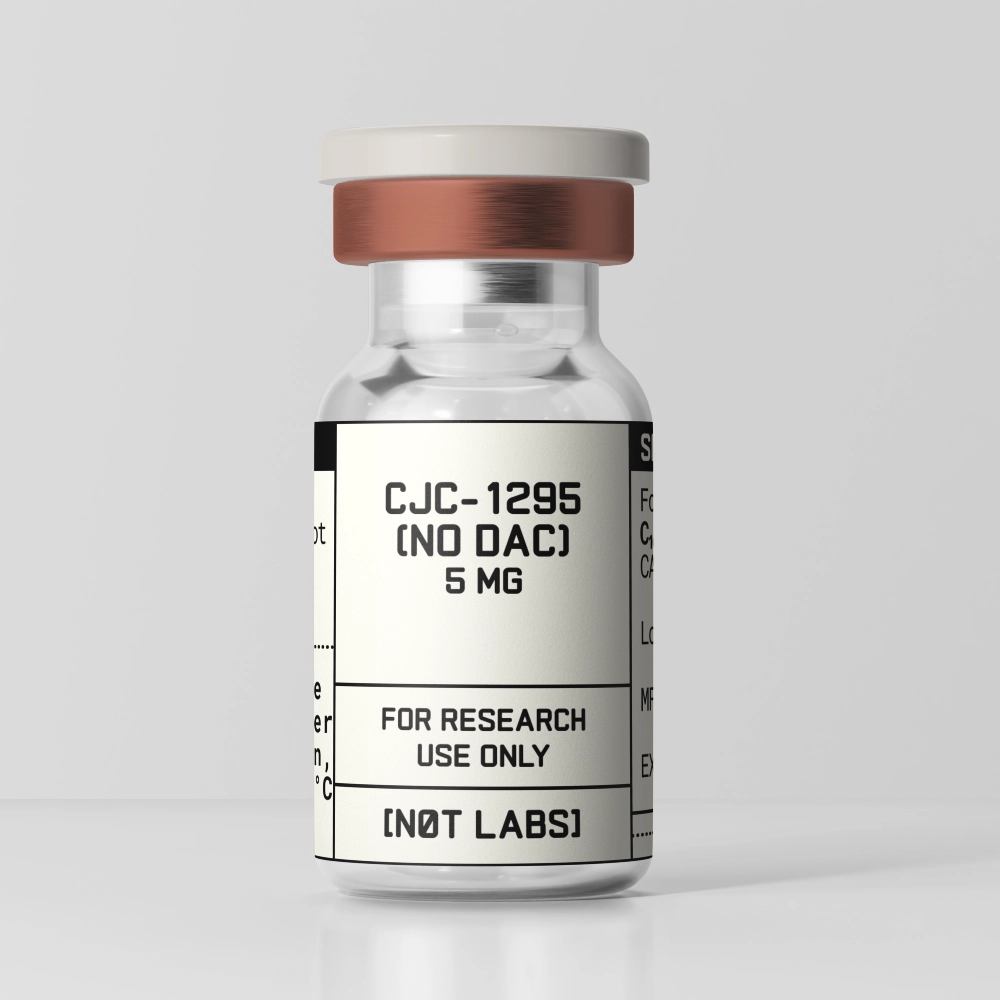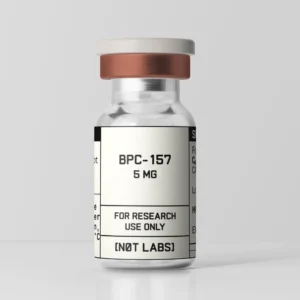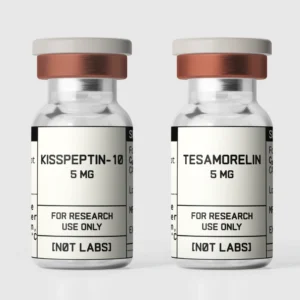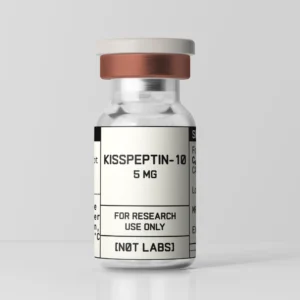Overview
CJC-1295 No DAC peptide is a synthetic analog of growth hormone-releasing hormone (GHRH) designed without the Drug Affinity Complex (DAC). This shorter-acting modification is valuable in studies modeling pulsatile GH secretion and downstream IGF-1 signaling.
Compound Breakdown
- CJC-1295 No DAC peptide (5mg / 10mg): A GHRH analog studied for its ability to stimulate growth hormone release, influence IGF-1 pathways, and provide insight into short-duration secretagogue activity.
Research Applications
Preclinical studies of this No DAC variant of CJC-1295 have examined:
- Growth hormone release → modeling transient GH pulses using the short-acting GHRH analog without prolonged elevation.
- IGF-1 pathway → downstream effects in metabolic and anabolic models.
- Pharmacokinetics → direct comparisons between DAC-modified and non-DAC versions.
- Synergistic exploration → frequently studied with Tesamorelin and Sermorelin to evaluate growth hormone modulation.
Related Categories
This GHRH analog is included in our Hormone Compounds category, which also features Tesamorelin and Sermorelin for growth hormone pathway research.
Compliance Statement
All Not Labs products are strictly for research use only and are not intended for human or veterinary use.
FAQ
What is CJC-1295 No DAC peptide studied for?
It is primarily investigated as a GHRH analog for pulsatile GH release, pituitary signaling, and endocrine balance in preclinical models.
How does CJC-1295 No DAC differ from the DAC version?
The No DAC form has a shorter half-life, making it ideal for research on transient GH pulses. The DAC version provides extended exposure, useful for long-duration studies.
Why is pulsatile GH release important in research?
Natural GH secretion occurs in pulses, not continuous flow. Modeling this rhythm with the No DAC variant provides insights into how GH regulates metabolism, recovery, and hormone feedback. These dynamics are essential for distinguishing short-acting versus long-acting GHRH analogs.
Can CJC-1295 No DAC peptide be studied with other compounds?
Yes. It is frequently combined with peptides such as Ipamorelin to evaluate synergistic GH release, often compared against single-compound studies.
Which research models are most common?
Rodent endocrine studies focusing on GH release, IGF-1 modulation, muscle recovery, and glucose regulation. In vitro cell assays are also used to investigate GH receptor signaling and downstream pathways.
Is CJC-1295 No DAC peptide stable for research storage?
Yes. As a lyophilized powder, it is stable under recommended laboratory storage conditions until reconstitution.
How is purity and identity confirmed?
Each batch is supported by a Certificate of Analysis (COA), verifying peptide identity, purity, and quality.






Reviews
There are no reviews yet.